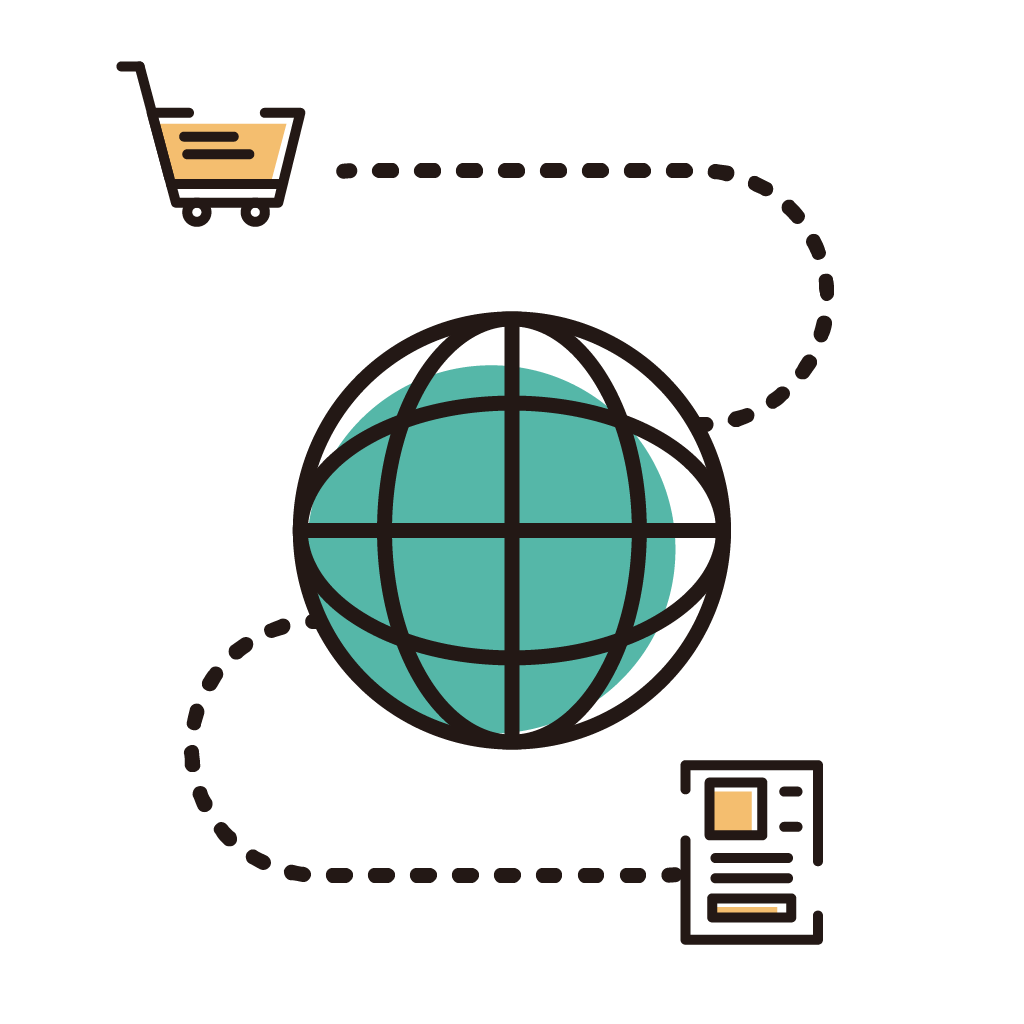"How arrogant you were last month, how melancholy you are this month. There are short positions and open positions in London. If you need it, please leave a message."
At 9:30 pm on December 20, Ningbo freight forwarder Chang Jiang sent a message to WeChat Moments and quickly received several inquiry messages.
Recently, due to the tension in the Red Sea region, the Suez Canal has been pressed on the "pause button", and the Asia-Europe route has become urgent. Many shipping giants, including Maersk and Hapag-Lloyd, have successively announced the suspension of services through the Red Sea. Affected by this, some ships of at least 13 shipowners have chosen to bypass the Cape of Good Hope in Africa.
"By going around the Cape of Good Hope, the voyage will be lengthened, and the freight will also increase. The freight rates on the Asia-Europe route have increased by 40% in the past two weeks." Chang Jiang told a reporter from Time Weekly.
Time slows down, costs rise, and foreign trade companies urgently need other means of transportation for their goods. As alternatives, will China-Europe freight trains and air freight reap dividends in this “Red Sea crisis”?

Many airlines announce surcharges
Due to armed attacks on some merchant ships passing through the Red Sea along the coast, many shipping giants announced the temporary suspension of all routes passing through the Red Sea.
As the only way through the Suez Canal, the Red Sea plays an important role in global shipping routes. This suspension has had a huge impact on global trade, especially Eurasian trade.
Circling the Cape of Good Hope means adding about 9,000 kilometers to the total mileage and about 10 days to the journey. At present, Maersk, the world's largest container shipping company, announced on December 21 that due to being forced to detour, all routes that need to be detoured will uniformly increase the freight rate by US$200 per TEU. Starting from January 1, 2024, Additional charges will be imposed on a large number of affected routes.

Maersk announces increased transport disruption surcharge portion
CMA CGM, the world's third largest container shipping company, also announced on the 21st that it would charge a Red Sea surcharge of US$1,575 per 20-foot dry box and US$3,000 per refrigerated container and special box.
According to the spot market freight rates updated by freight forwarders from shipowners, prices on many European routes will double early next year. A freight forwarder in Shanghai told a reporter from Time Weekly that shipping prices have increased by 40 to 50% in the past two weeks, and shipping prices may more than double early next year.
In addition, according to The Paper, multiple freight forwarding company sources revealed that the spot market freight rates recently updated by many shipowners show that many European routes and Mediterranean routes have doubled in price in early January next year.
Nomura Securities analyst Masaharu Hirokane also said that in January next year, the annual freight rate contract for the Asia-Europe route will be renewed, and freight rates may generally rise by then. The severity of the current situation may be similar to the supply chain disruptions from 2020 to 2022, and it would not be surprising if sea freight prices on the Asia-Europe route more than double.
The Shanghai Export Container Comprehensive Freight Index released by the Shanghai Shipping Exchange shows that on December 22, the market freight rates for exports from Shanghai Port to European and Mediterranean basic ports were US$1,497/TEU and US$2,054/TEU respectively, which were significantly higher than a week ago. Increases of 45.5% and 30.9%.
China-Europe freight train inquiries surge
"Because the situation in the Red Sea affects shipping, foreign trade companies may seek air transportation for urgent goods, but the benefits from air transportation will not be too great," Chang Jiang said.
He told a reporter from Time Weekly that it has been the off-season for air transport recently. "There are more goods in early December, and airlines and agents sign agreements for the coming year at the end of the year, which generally raises prices. At that time, the freight price rose to more than 50 yuan per kilogram. Now that the Christmas goods have basically been shipped, the freight price has dropped to 30 yuan. About per kilogram. But even in the off-season, the air freight price is more than five times higher than the sea freight price."

In Chang Jiang's view, the China-Europe freight train has benefited the most from the blockage of the Red Sea, and many companies have approached him to book warehouses. "The volume of business inquiries has more than doubled, and now some trains have been sold out and cannot be booked."
Although the price of the China-Europe train is slightly higher than that of shipping, it is faster. Taking goods to Hamburg, Germany, as an example, shipping usually takes 28 days. Now it takes an additional 10 days to go around, while the China-Europe train takes only 17 days to reach Hamburg.
The freight and speed are both between air and sea. Although it was not optimistic by some people when it was first born, the China-Europe Express has gained more recognition for its stability in recent years and has gradually become one of the freight arteries between China and Europe. The latest data shows that from January to November this year, China-Europe freight trains made a total of 16,415 trains, sending 1.749 million TEUs of goods, and the transportation volume has exceeded the total transportation volume in 2022.
A reporter from Time Weekly learned from the Shanghai Freight Center that the frequency of China-Europe freight trains in Shanghai has been relatively stable recently, which is around 6 return trips per month. There are more return trips this month than before, with 6 trips, which is significantly higher than the usual one or two return trips per month. promote. The main reason is that domestic merchants hope to prepare Spring Festival goods in advance.
However, Shanghai Freight Company revealed that its platform company plans to ship 150 trains next year, which is an average of about 12 trains per month, double this year. But it is understood that this is still in the planning stage, and the details will depend on the international environment and other aspects next year.
"China-Europe trains provide a stable and efficient land transportation method. Compared with sea transportation and air transportation, China-Europe trains have shorter transportation time and are not affected by weather and sea conditions, ensuring timely delivery of goods." Chinese cities Yuan Shuai, executive vice president of the Agricultural, Cultural and Tourism Industry Revitalization Research Institute of the Development Research Institute, told a reporter from Times Weekly.

In addition to land transport and air transport, Jan Kleine-Lasthues, CEO of air transport at Hermann Logistics, a world-renowned freight forwarder, said that some fast-moving companies are already trying to shift to so-called intermodal transport, which involves two or more modes of transportation. Such alternative routes would allow customers to avoid dangerous areas of the Red Sea and reduce wasted time around the Cape of Good Hope.
Exports are expected to pick up next year
How long will the Red Sea crisis last?
Alan Baer, CEO of logistics company OL USA, believes that shipping and logistics customers need to prepare for at least 90 days of disruption to Red Sea shipping.
If this prediction is followed, the situation of high freight rates and tight transportation capacity will continue until February or March next year. At present, because it is the off-season for foreign trade, the impact of the Red Sea crisis on the domestic foreign trade industry is limited. However, if tensions continue, freight prices will rise and transportation times will increase, it will inevitably affect the profits and turnover efficiency of foreign trade companies.
The latest foreign trade data released in November showed that exports finally rebounded to positive growth after half a year of negative growth, while imports fell back. In US dollar terms, exports in November increased by 0.5% year-on-year, exceeding market expectations, while imports fell by 0.6%. In the first 11 months of this year, my country's total import and export value was US$5.41 trillion, a decrease of 5.6%.

Looking forward to 2024, the "China Economic and Financial Outlook Report" recently released by the Bank of China Research Institute believes that both upward and downward factors for China's exports coexist, and structural upgrades are expected to continue. China's exports are expected to grow by about 2% year-on-year in 2024, and the growth rate is expected to rebound by about 6.2 percentage points from the previous year. From the perspective of export destinations, China's exports to emerging economies are still an important support.
Hwabao Securities predicts that in 2024, overseas economies will most likely be in the process of a mild decline and returning to normalcy from overheating. The impact on China's foreign demand will be neutral and there will be no significant upward or downward driving force. The export growth rate in 2024 is expected to be in an inverted U shape, with the annual growth rate being -0.3%.
Zhou Mi, a researcher at the Institute of International Trade and Economic Cooperation of the Ministry of Commerce, believes that in 2024, the global economic situation will still not be optimistic, geopolitical conflicts have not yet reached an inflection point, and the global restructuring of supply chains has brought many additional costs. However, the world needs products made in China. Faced with external challenges, all parties may gain more opportunities when importing from China. China's important role in global manufacturing is expected to be further enhanced.
“However, this also requires Chinese enterprises to take active action and explore effective ways of innovative cooperation. Even if emergencies occur again, they need to act efficiently based on adequate plans to reduce the damage caused by uncertainty to the sustainable operations of enterprises. "

Shenzhen Xiangfeiyang International Logistics, with many years of experience in air transport, sea transport, and express delivery channels, has maintained close long-term cooperation with various airlines, shipping companies, and the four major express delivery companies. It adheres to the principle of people-oriented and integrity. The company has experienced port Customer service at the front and back ports patiently solves professional shipping problems in international logistics, efficiently tracks cargo information, and strives to build the Xiangfeiyang brand with self-operated and self-controlled air and sea delivery routes in the United States, Canada, the United Kingdom, and Europe. It has more than 10,000 square meters of overseas warehouses in the United States. There are more than 3,000 square meters of overseas warehouses in the UK. Based on the type of goods, product attributes, and timeliness requirements, the country will customize the most suitable logistics plan for customers, so that customers' goods can arrive on time at the scheduled time, and successfully save logistics for customers. Cost, our expertise, your peace of mind!























